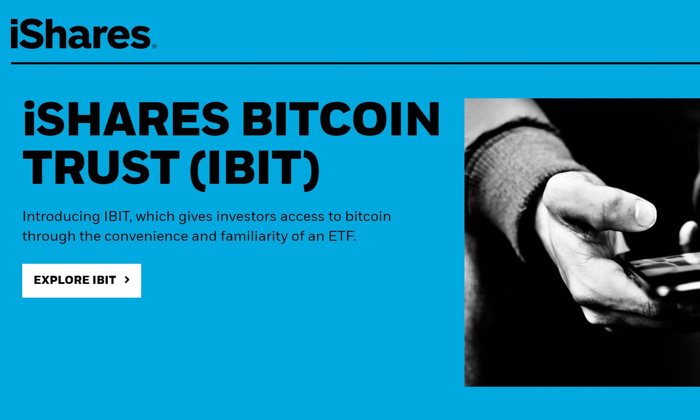In the evolving landscape of cryptocurrency investing, sovereign wealth funds are increasingly turning to indirect Bitcoin exposure as a strategic move to bypass regulatory constraints. Recent insights from Geoffrey Kendrick at Standard Chartered reveal that many institutions, including major state entities, are opting for MicroStrategy (MSTR) instead of direct Bitcoin exchange-traded funds (ETFs) to gain exposure in the Bitcoin market. This trend highlights how institutional investors are redefining their Bitcoin market strategies amidst regulatory challenges, signaling a newfound interest in leveraging equity stakes as a route to access the digital currency. The shift towards MicroStrategy shares has become particularly pronounced, with Norway, Switzerland, and South Korea emerging as significant players in this space, collectively acquiring substantial Bitcoin-equivalent equity. As the market continues to evolve, the spotlight remains on how these indirect avenues can influence the trajectory of Bitcoin’s institutional acceptance and valuation in the future.
Sovereign wealth institutions are displaying a notable preference for accessing Bitcoin through alternative means, reflecting a broader trend in cryptocurrency investment. Instead of engaging directly with Bitcoin ETFs, many are choosing to invest in companies like MicroStrategy, which offers a leverage-driven indirect path to the Bitcoin market. This approach allows these entities to navigate regulatory barriers while still gaining substantial Bitcoin exposure through equity shares. As the popularity of this strategy grows, more institutional investors are looking to embrace innovative market strategies that enable them to tap into the potential of Bitcoin without the complications of direct holdings. This shift not only reshapes the investment landscape but also underscores the increasing integration of digital assets into traditional finance.
Indirect Bitcoin Exposure: A Growing Trend Among Sovereign Wealth Funds
In recent months, sovereign wealth funds have increasingly opted for indirect Bitcoin exposure, particularly through their investments in MicroStrategy (MSTR), as highlighted in reports from Standard Chartered. This strategic shift allows state institutions to bypass regulatory hurdles and operational constraints typically associated with direct Bitcoin investments. Moreover, as nations seek to diversify their asset allocations amid economic uncertainty, MSTR’s position as a leveraged proxy for Bitcoin has become highly attractive. This approach not only provides exposure to Bitcoin’s value appreciation but also mitigates some risks associated with holding the cryptocurrency directly.
The move towards indirect exposure signifies a notable trend where institutional investors are looking for innovative ways to incorporate Bitcoin into their portfolios. This approach is particularly apparent in regulatory filings that reveal active participation from countries like Norway, South Korea, and Switzerland, who have collectively added significant Bitcoin exposure through MSTR shares. This trend is crucial as it illustrates how sovereign entities are strategically navigating the evolving landscape of digital asset investments, steering clear of direct ETFs while capitalizing on companies like MicroStrategy that have substantial Bitcoin holdings.
MicroStrategy’s Role as a Proxy for Bitcoin Investments
MicroStrategy has emerged as a pivotal entity for institutional investors seeking Bitcoin exposure without direct ownership of the digital asset. By investing in MSTR, sovereign wealth funds can purchase shares in a company with one of the largest Bitcoin reserves globally, thus benefitting from Bitcoin’s growth without directly engaging in its volatile market. This indirect exposure could be a safe haven during uncertain economic climates, as traditional stock market fluctuations often do not correlate directly with Bitcoin price movements, allowing for a hedging strategy that captures the upside of Bitcoin investment.
Furthermore, MSTR’s appeal lies in its transparent approach to Bitcoin acquisition, as the company continues to accumulate vast amounts of the cryptocurrency over time. This strategy not only assures institutional investors of aligning their interests with a company that is actively committed to Bitcoin but also illustrates a growing confidence in the long-term viability of the cryptocurrency. As sovereign wealth funds increasingly rely on MSTR as a structural bridge to Bitcoin markets, it demonstrates a significant shift in how institutional investors are approaching digital assets amid changing fiscal landscapes.
The Impact of Bitcoin ETFs on Institutional Investment
While Bitcoin exchange-traded funds (ETFs) have been a popular method for gaining direct exposure to the cryptocurrency market, the current preference for indirect strategies through entities like MicroStrategy suggests a nuanced approach by institutional investors. Recent trends show that after states like Wisconsin exited from large ETF positions, sovereign wealth funds have found greater value in acquiring substantial equity stakes in MSTR. This shift reflects an understanding that while Bitcoin ETFs offer accessibility, the operational limitations and market volatility associated with direct ownership can often deter major investments.
Moreover, institutional investors appear to view the potential for Bitcoin ETFs as one aspect of a broader strategy that includes indirect exposure via established companies with grass-root holdings. Observations indicate that this preference may lead to a more stable accumulation of Bitcoin assets as sovereign entities deepen their market engagements. As data continues to support bullish projections for Bitcoin’s growth, the combined interest in MSTR shares, along with ETF strategies, signifies a complex and evolving investment landscape that embraces both direct and indirect approaches to digital assets.
Geopolitical Factors Driving Bitcoin Investments
Sovereign wealth funds’ growing interest in Bitcoin and related investments is heavily influenced by geopolitical instability and economic turbulence. In a world where traditional currencies may falter due to inflation and misinformation, nations are strategically looking for alternative assets like Bitcoin to preserve wealth. The cautious but deliberate approaches taken by entities in regions such as the Middle East and Europe reflect this sentiment, as they increasingly diversify their portfolios to safeguard against global financial fluctuations.
This geopolitical landscape fosters a compelling environment for Bitcoin adoption, particularly among sovereign entities that are keen to position themselves as frontrunners in digital asset investments. The recent uptick in MSTR holdings by various wealth funds is partially a response to these uncertainties, suggesting a forward-thinking approach. As investors collectively acknowledge the value of cryptocurrencies as potential stores of wealth, the role of Bitcoin is expected to solidify even further as an essential component of modern economic strategies.
Institutional Investors’ Bitcoin Market Strategies
The strategies that institutional investors are employing to engage with the Bitcoin market reflect a refined understanding of both the opportunities and risks involved. By continuing to invest through firms like MicroStrategy, these entities are able to leverage the expertise of companies that have a solid footing within the cryptocurrency space. This allows for an enhanced approach to risk management, ensuring that Bitcoin investments are integrated smartly within broader investment frameworks.
Moreover, institutional market strategies focusing on Bitcoin have begun to evolve, especially as firms like Standard Chartered project bullish long-term price targets. As digital assets become more widely accepted and understood, institutional investors are likely to adopt increasingly sophisticated strategies that emphasize both direct and indirect market exposure. The advancement of data granularity in 13F filings indicates a deeper engagement among institutional players, revealing a potent shift in market dynamics that welcomes more substantial and diverse investments into Bitcoin.
The Future of Bitcoin’s Institutional Adoption
As we look to the future, the trajectory of institutional adoption of Bitcoin seems poised for significant growth, particularly through channels involving companies like MicroStrategy. With Standard Chartered projecting Bitcoin prices reaching unprecedented levels, more institutional players are likely to be drawn into the market, recognizing the cryptocurrency as a legitimate asset class. This potential for skyrocketing valuations reinforces the reasoning behind indirect investment strategies, as investors seek to maximize their exposure while minimizing regulatory risks.
Additionally, the increasing awareness among sovereign entities and investment institutions regarding the importance of digital assets in a diversified portfolio demonstrates a monumental shift in investment philosophy. The reliance on indirect routes to Bitcoin exposure speaks to an upcoming trend where innovation in market strategies will drive competition and create new forms of asset management. As more institutions engage with Bitcoin, the overall landscape is expected to shift, making it a crucial element of institutional investment go-forward.
Navigating Regulatory Landscapes for Bitcoin Investments
Navigating the regulatory landscapes surrounding Bitcoin investments is a significant concern for institutional investors, particularly sovereign wealth funds, as they refine their strategies for engaging with digital assets. As highlighted in recent reports, regulatory challenges can hinder institutions in acquiring Bitcoin directly, prompting a growing reliance on indirect exposure methods through companies like MicroStrategy. This avenue allows sovereign entities to mitigate risks associated with compliance while still reaping the benefits of Bitcoin investments.
With regulatory frameworks still evolving, institutional investors are increasingly advocating for clearer guidelines that support responsible Bitcoin usage across markets. The focus on indirect exposure indicates a proactive effort by these entities to protect their investments while adhering to the regulatory mandates. Thus, as governments and regulatory bodies continue to assess the implications of Bitcoin within their jurisdictions, firms with substantial Bitcoin holdings will play a crucial role in shaping future regulatory narratives.
Investor Sentiment and Market Dynamics in Bitcoin
Investor sentiment regarding Bitcoin has transformed dramatically over the past few years, reflecting a growing acceptance of the cryptocurrency as a viable investment vehicle. This change is particularly evident among institutional investors, as the aggregate data from those opting for indirect Bitcoin exposure through firms like MicroStrategy indicates a cautious yet optimistic disposition. As countries diversify their asset holdings amid potential economic downturns, the allure of Bitcoin as a hedge against inflation becomes increasingly compelling.
Market dynamics surrounding Bitcoin have simultaneously evolved, with institutions recognizing that Bitcoin’s volatility can provide unique opportunities for growth. The rise in institutional participation, especially through indirect exposure, has cultivated a sense of legitimacy for Bitcoin in traditional financial circles. As more entities explore innovative ways to tap into Bitcoin’s value, such as those facilitated via MSTR, the interplay of investor sentiment and market conditions is expected to bolster Bitcoin’s position as a go-to asset for long-term financial stability.
Educational Initiatives for Institutional Investors in Bitcoin
As institutional interest in Bitcoin grows, there is a pressing need for educational initiatives to equip investors with the knowledge required to navigate the complexities of this digital asset space. Understanding Bitcoin’s multifaceted nature, its market trends, and the implications of various investment strategies is crucial for making informed decisions. Initiatives aimed at educating institutional investors about the potential benefits and risks associated with Bitcoin can enhance confidence and foster a more robust investment ecosystem.
Moreover, organizations and investment firms can play a significant role in facilitating workshops, webinars, and resources that demystify the intricacies of Bitcoin investing. As sovereign wealth funds and state institutions increasingly adopt Bitcoin strategies, these educational efforts will be vital in ensuring that investors fully grasp the opportunities presented by indirect exposure and related investment methods. Building a knowledgeable investment community will also pave the way for cohesive market growth, ultimately benefiting Bitcoin’s standing in the institutional investment realm.
Frequently Asked Questions
What is indirect Bitcoin exposure and why are sovereign wealth funds choosing it?
Indirect Bitcoin exposure refers to investing in companies or financial instruments related to Bitcoin rather than buying Bitcoin directly. Sovereign wealth funds are choosing this strategy to bypass regulatory constraints and gain exposure through firms like MicroStrategy, which holds a significant amount of Bitcoin.
How do MicroStrategy’s Bitcoin holdings influence institutional investors?
MicroStrategy’s Bitcoin holdings, totaling over 576,230 BTC, serve as an attractive proxy for institutional investors seeking indirect Bitcoin exposure. This approach offers a way to gain exposure to Bitcoin’s price movements without the direct risks associated with owning the cryptocurrency.
What role do Bitcoin ETFs play in the landscape of indirect Bitcoin exposure?
Bitcoin ETFs provide a method for investors to gain exposure to Bitcoin without holding it directly. However, recent trends indicate that some institutional investors are shifting towards acquiring shares of companies like MicroStrategy as a preferred route for indirect Bitcoin exposure, even as direct ETF interest remains stable.
Are institutional investors decreasing their reliance on Bitcoin ETFs?
While traditional Bitcoin ETF activities remain steady, recent filings suggest that institutional investors are increasingly favoring MicroStrategy for indirect Bitcoin exposure, driven by the desire for a leveraged approach and the need to navigate regulatory hurdles associated with direct Bitcoin purchases.
What implications does indirect Bitcoin exposure have for the future of Bitcoin investment?
The growing trend of indirect Bitcoin exposure through MicroStrategy and similar vehicles indicates a bullish sentiment towards Bitcoin, as institutional investors seek to integrate Bitcoin into their portfolios. Analysts project that this could lead to significant price increases for Bitcoin as more capital flows into these indirect investment vehicles.
Which countries are leading in indirect Bitcoin exposure through MicroStrategy?
Countries like Norway, Switzerland, and South Korea have been notably active in acquiring MicroStrategy shares for indirect Bitcoin exposure. This trend illustrates an increasing interest from sovereign wealth funds to participate in the Bitcoin market while managing regulatory concerns.
How has the interest in MicroStrategy for Bitcoin exposure changed over time?
Interest in MicroStrategy has seen a marked increase over recent quarters, as sovereign entities view it as a beneficial alternative for indirect Bitcoin exposure, enabling them to accumulate Bitcoin-equivalent holdings amid regulatory challenges associated with direct investment.
What are the potential benefits of using MicroStrategy for indirect Bitcoin exposure?
Investing in MicroStrategy allows institutional investors to benefit from Bitcoin’s growth potential while avoiding the direct complexities of cryptocurrency management. It acts as a structural bridge, aligning with the desire for operational efficiency and regulatory compliance.
What is the future outlook for Bitcoin and indirect exposure strategies?
Experts predict a positive outlook for Bitcoin as institutional integration increases through indirect exposure strategies. With forecasts suggesting Bitcoin could reach heights of $150,000 or more, investor interest in indirect exposure via vehicles like MicroStrategy is expected to grow.
| Key Point | Details |
|---|---|
| Sovereign Entities and Bitcoin | Sovereign wealth funds are increasingly opting for indirect Bitcoin exposure through MicroStrategy rather than directly investing in BTC or Bitcoin ETFs. |
| Growth in MicroStrategy Holdings | Regulatory filings reveal that the majority of sovereign Bitcoin accumulation in the last quarter is through MicroStrategy, which holds 576,230 BTC. |
| Trend of Indirect Exposure | Countries like Norway, Switzerland, and South Korea have added over 1,600 BTC in exposure through investments in MSTR shares. |
| Contrast with ETFs | While some states like Wisconsin have divested from direct ETF exposure, many other institutions are increasing their investment in MSTR. |
| Institutional Adoption | As institutional investors utilize MSTR as a bridge to access Bitcoin markets, Standard Chartered predicts Bitcoin could reach $150,000 or even $500,000 by 2028. |
| Conclusion | Despite geopolitical uncertainty and inflation, sovereign entities are cautiously exploring Bitcoin as a store of value through indirect methods. |
Summary
Indirect Bitcoin exposure is becoming a notable trend among sovereign entities as they navigate regulatory and operational challenges in directly investing in cryptocurrencies. Investors are increasingly looking to MicroStrategy as a means to gain access to Bitcoin without dealing with the complexities of the cryptocurrency market directly. With sovereign wealth funds and state institutions accumulating shares in MSTR, this trend suggests a growing acceptance of Bitcoin as a viable asset class. The outlook remains bullish, indicating that as engagement deepens, Bitcoin’s role in traditional portfolios is likely to expand significantly.
Indirect Bitcoin exposure is rapidly becoming a favored strategy among institutional investors, especially sovereign wealth funds looking to navigate regulatory constraints. Recent reports indicate that instead of direct investments through Bitcoin ETFs, these entities are increasingly opting for shares in MicroStrategy, which boasts substantial Bitcoin holdings itself. This trend underscores a significant transitional phase in how governments and public institutions are engaging with the Bitcoin market. By leveraging the unique status of MicroStrategy as a proxy for Bitcoin, investors can circumvent operational hurdles while tapping into potential gains. As institutional interest continues to swell, it raises intriguing questions about the future dynamics of Bitcoin market strategies across various investment sectors.
The growing trend of alternative investment vehicles is reshaping the landscape of digital assets, particularly for large governmental entities seeking indirect pathways to Bitcoin. Rather than direct stakes in cryptocurrencies like Bitcoin through conventional means, many sovereign institutions are turning to companies such as MicroStrategy as a method of gaining exposure. This approach highlights a strategic pivot where institutional investors, including state funds and pension schemes, engage with Bitcoin without having to manage the complexities associated with direct ownership. Amid fluctuating global markets and rising inflation, this pathway not only diversifies portfolios but also reinforces the narrative surrounding the viability of Bitcoin as a store of value. As we delve deeper into this evolving phenomenon, the implications for future investment strategies in the digital asset realm become increasingly significant.















